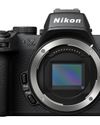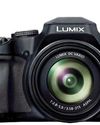
Macro photography allows you to put ordinary items under the microscope and turn them into the extraordinary, revealing a brand new world of fascinating detail otherwise hidden to the naked eye.
One reason why macro photography is so much fun is that it's accessible. While a dedicated macro lens is certainly worth the investment if you want to take it seriously, you can get astonishing results with budget-friendly accessories such as extension tubes, reversing rings or close-up filters, which turn ordinary kit lenses into macro ones - at around £/$100, they won't break the bank. Over the following pages, we'll look at these accessories, as well as more elaborate gear picks, in more detail.
When it comes to macro photography, there's a seemingly never-ending supply of subjects to point your camera towards, from finding details in insects, critters and creepy crawlies, to flowers, tree bark, bird feathers and more - there really is no limit.
Even the most mundane subjects become interesting when you get up close to them with your macro lens or close-up adapters.
Macro has some distinct challenges, though, including a limited depth of field and images being more prone to camera shake, so let's share our top tips to help you get started with cracking close-ups.
PART 1 GET THE RIGHT GEAR
Dedicated lenses aside, there are plenty of gadgets and gizmos out there to help you get better close-ups
Macro photography is one of those areas where having the right equipment really helps.
While photography kit can be expensive, the great news is that much of the essential kit you need to shoot top close-ups doesn't break the bank.
You don't even need a dedicated macro lens to get started - check out the extension tubes, reversing rings and close-up filters below, which all help you get closer with your current standard DSLR or mirrorless camera and a basic kit lens or prime optic.
This story is from the {{IssueName}} edition of {{MagazineName}}.
Start your 7-day Magzter GOLD free trial to access thousands of curated premium stories, and 9,000+ magazines and newspapers.
Already a subscriber ? Sign In
This story is from the {{IssueName}} edition of {{MagazineName}}.
Start your 7-day Magzter GOLD free trial to access thousands of curated premium stories, and 9,000+ magazines and newspapers.
Already a subscriber? Sign In

Nikon Z50 II
Brand's original DX-format Z-series mirrorless gets turbocharged with Expeed 7 processor

Eric Meola
The American photographer's latest book is called Bending Light: The Moods of Color. Niall Hampton finds out more

Lumix FZ82D
Panasonic shows that bridge cameras aren't dead yet

Art Wolfe & Federico Veronesi
Two long-term contributors to Remembering Wildlife - and members of the competition judging panel - reflect on the series reaching its 10-year milestone

Scanning ahead...
AI is no substitute for experiencing the world and telling compelling stories, says Jon Devo

10 Years of Remembering Wildlife
ENTER TODAY! Submit your images of pangolins in the wild - or any of the previous nine species to have featured in the Remembering Wildlife series - for the chance to be featured in the next book

Enhance your wildlife subjects
Using simple techniques in Photoshop, James Abbott shows how to make wildlife subjects stand out from their background

Edit fast with slider pairs
For effective editing results, combine pairs of sliders in Lightroom, says Sean McCormack

Reader gallery
Digital Camera readers show how they've been getting creative, submitting images across a range of genres

Hotshots
Our showcase of the winning entries from the Nikon Comedy Wildlife Awards 2024